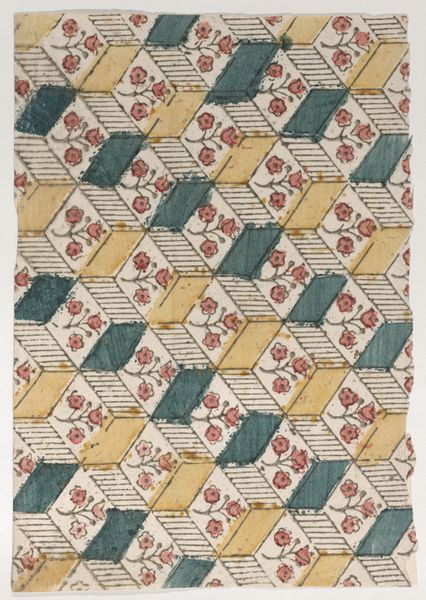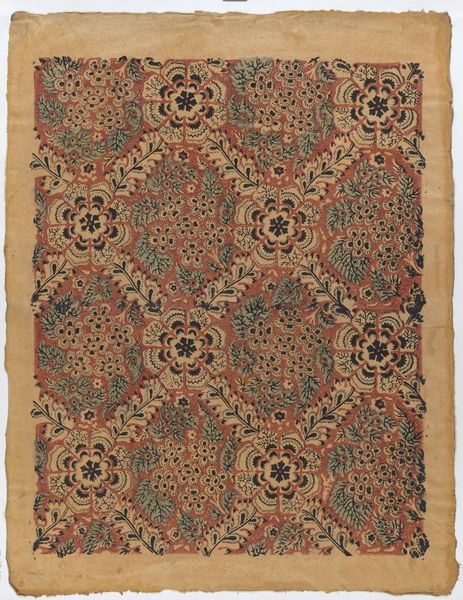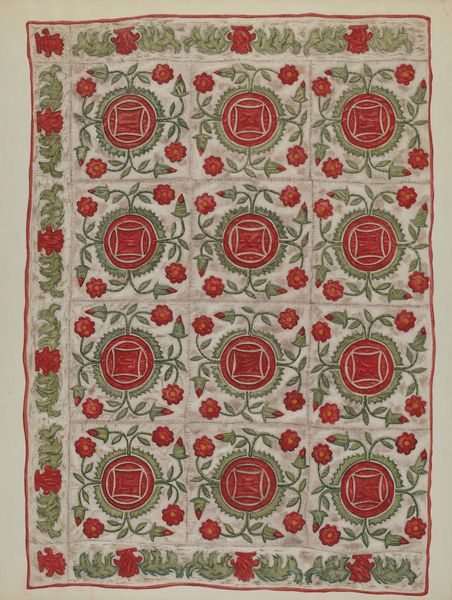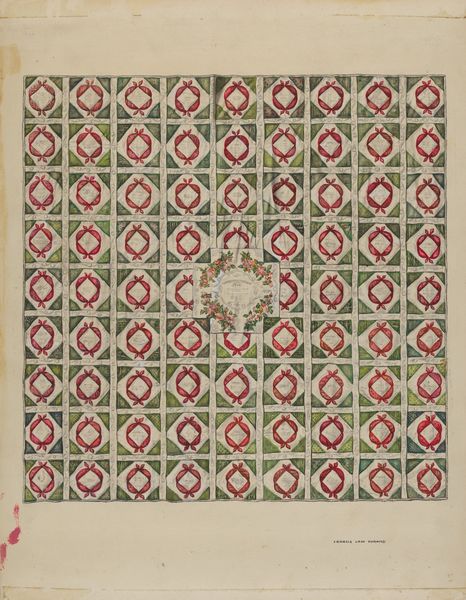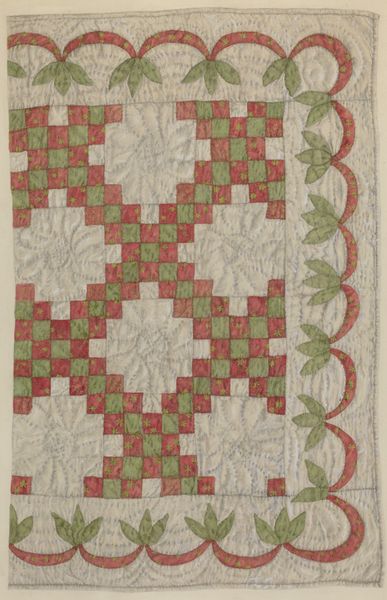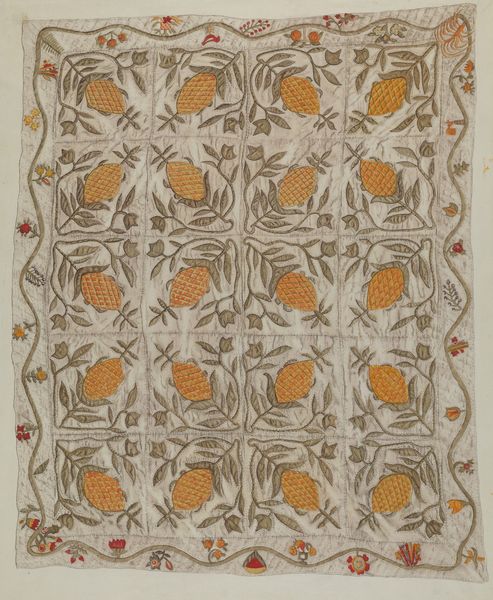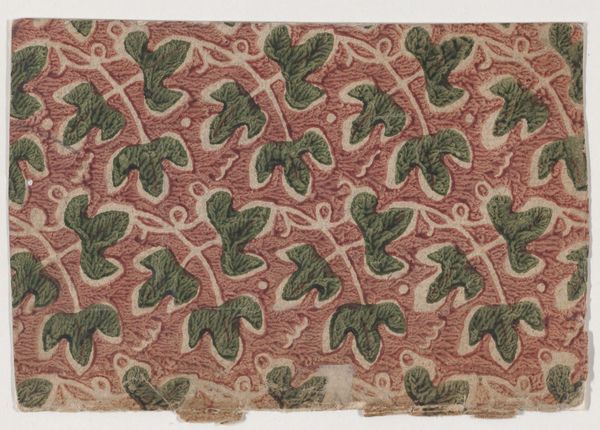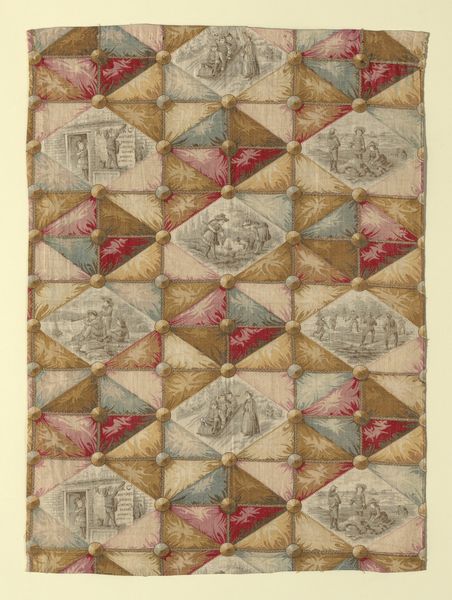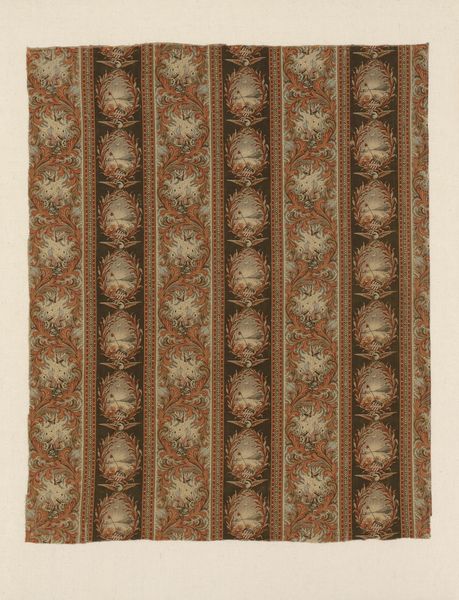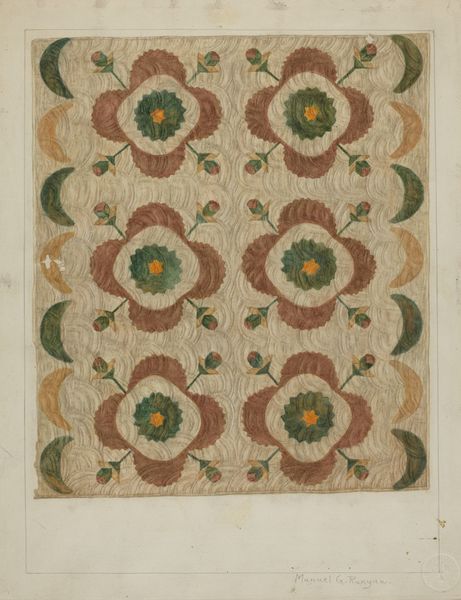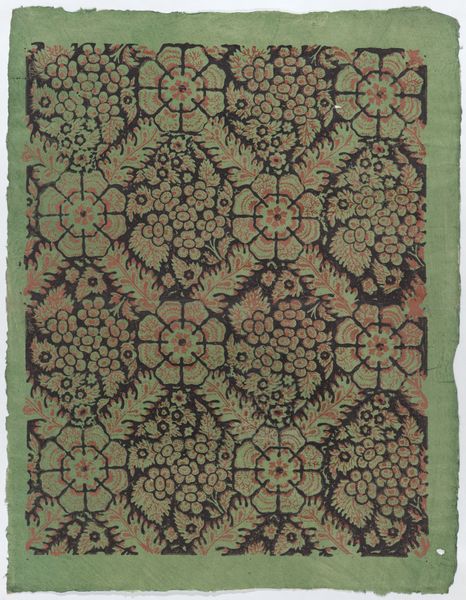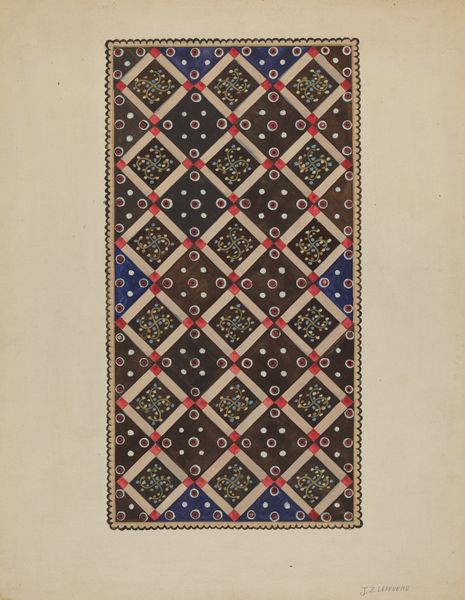
Sheet with overall pattern of circles and squares with lines through them 1800 - 1900
0:00
0:00
print, paper
# print
#
paper
#
geometric pattern
#
abstract pattern
#
organic pattern
#
geometric
#
line
Dimensions: Sheet: 3 3/4 × 6 1/2 in. (9.5 × 16.5 cm)
Copyright: Public Domain
Curator: Before us, we have a fascinating, if humble, textile study. Dating from sometime in the 19th century, this "Sheet with overall pattern of circles and squares with lines through them", as it's titled, is an anonymous drawing, a print of some sort featuring simple geometric shapes rendered in green and red. Editor: It’s deceptively simple, isn’t it? My first impression is one of subdued vibrancy. The muted tones create a calm surface, yet the geometric rigor feels insistent, almost restless. I can imagine this as wallpaper in a room designed for someone caught between tradition and the budding Industrial Revolution. Curator: The repetition and precise execution absolutely resonate with the mechanized production that was accelerating at the time, an exploration of pure form through shape and color. I am immediately intrigued by the systematic structure, how the pattern's network balances those circles and squares in neat diagonal rows. Note how the intersection creates further geometrical complexity. Editor: I agree that it appears self-contained, a mere exercise in geometry, yet I wonder about the social conditions out of which that exercise was undertaken. The colors, the very act of repeating shapes – isn’t there an inherent challenge to capitalist values here, particularly as applied to interior decoration for a certain emerging social class? Couldn't we connect its production to the various anonymous textile workers of the time? Curator: It’s certainly possible. But let's first analyze this in purely aesthetic terms. I find myself drawn to how each individual element interacts and creates harmony within the overall design; there is elegance within its constraints. That repetitive framework provides ample opportunities for exploring a potentially transformative, new artistic practice. Editor: Perhaps. I'd argue that understanding its potential impact means looking outward, into the social structures that simultaneously constrained and enabled the artist’s imagination to create such a vibrant artwork. I think that there are other dialogues at play within such images – dialogues concerning class, gender, and an awareness of social limitations, or possibilities. Curator: Ultimately, this pattern functions as a sort of language, using shapes to articulate a balanced visual experience. It makes me consider the power of abstraction and precision in its own terms. Editor: It leaves me pondering the artist’s unspoken critique, and the hidden labor embedded within each repeated shape, its possible dialogue with nascent industrial processes.
Comments
No comments
Be the first to comment and join the conversation on the ultimate creative platform.
